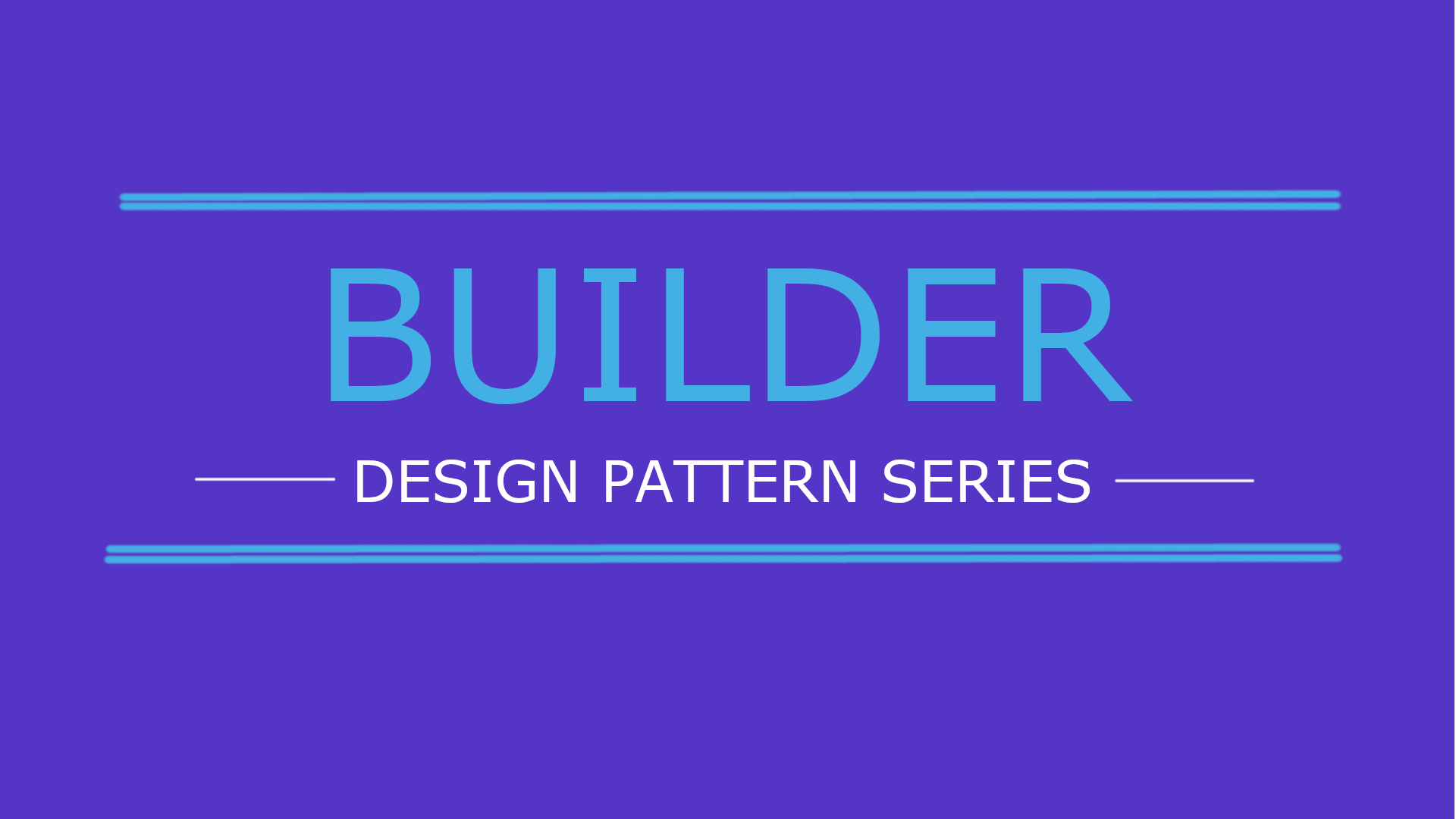
The Builder Design Pattern is a creational design pattern that allows for the step-by-step construction of complex objects. It provides a way to construct an object by specifying its type and content, separating the construction process from its representation.
What is the Builder Design Pattern?
The Builder Design Pattern separates the construction of a complex object from its representation so that the same construction process can create different representations. It is particularly useful when an object needs to be created with many optional components or configurations.
Key Components
- Builder: An interface or abstract class that specifies the methods for building the different parts of the product.
- ConcreteBuilder: A class that implements the
Builderinterface and constructs the parts of the product. It also provides a method to retrieve the final product. - Product: The complex object being built. It typically includes multiple parts that can be assembled into a final product.
- Director: A class that constructs an object using the
Builderinterface. It defines the order in which to call the building methods and assembles the final product.
Why Use the Builder Design Pattern?
The Builder Design Pattern is used for the following reasons:
- Complex Object Construction: It simplifies the creation of complex objects by allowing incremental construction and customization.
- Separation of Concerns: It separates the construction logic from the representation of the object, adhering to the Single Responsibility Principle.
- Flexibility: It allows the creation of different representations of a product without changing the construction process.
Implementing the Builder Design Pattern
Basic Implementation
Here’s a basic implementation of the Builder Design Pattern in Java:
// Product Class
public class Product {
private String partA;
private String partB;
private String partC;
public void setPartA(String partA) {
this.partA = partA;
}
public void setPartB(String partB) {
this.partB = partB;
}
public void setPartC(String partC) {
this.partC = partC;
}
@Override
public String toString() {
return "Product [partA=" + partA + ", partB=" + partB + ", partC=" + partC + "]";
}
}
// Builder Interface
public interface Builder {
void buildPartA();
void buildPartB();
void buildPartC();
Product getResult();
}
// ConcreteBuilder Implementation
public class ConcreteBuilder implements Builder {
private Product product = new Product();
@Override
public void buildPartA() {
product.setPartA("PartA");
}
@Override
public void buildPartB() {
product.setPartB("PartB");
}
@Override
public void buildPartC() {
product.setPartC("PartC");
}
@Override
public Product getResult() {
return product;
}
}
// Director Class
public class Director {
private Builder builder;
public Director(Builder builder) {
this.builder = builder;
}
public void construct() {
builder.buildPartA();
builder.buildPartB();
builder.buildPartC();
}
}
In this example:
- Product Class: Represents the complex object being constructed. It has multiple parts that are set by the builder.
- Builder Interface: Defines the methods for building different parts of the product.
- ConcreteBuilder: Implements the
Builderinterface and provides the specific implementation for building the product parts. - Director Class: Uses the
Builderto construct the product step-by-step.
Advantages
- Complex Object Construction: Allows for complex objects to be constructed incrementally.
- Separation of Concerns: Separates the logic for constructing an object from the actual representation of the object.
- Immutability: Enables the creation of immutable objects by separating the construction process.
Example Usage
public class Main {
public static void main(String[] args) {
Builder builder = new ConcreteBuilder();
Director director = new Director(builder);
director.construct();
Product product = builder.getResult();
System.out.println(product);
}
}
In this usage example, the Director class directs the construction process, while the ConcreteBuilder class provides the implementation details for building the product.
Common Use Cases
The Builder Design Pattern is commonly used in scenarios where:
- Complex Objects: Objects with many parts or configurations are created. For example, building a complex document with different sections and formatting.
- Immutable Objects: Creating immutable objects with multiple optional parameters. For instance, constructing a
Userobject with different optional attributes. - Different Representations: Generating different representations of an object. For example, creating different types of reports (PDF, HTML, etc.) from the same data.
Frameworks and Libraries
In frameworks, the Builder Design Pattern is used to construct complex objects, such as graphical user interfaces or configuration objects, where the configuration can be customized and extended.
Complex Configuration Objects
The pattern is used when an object has multiple optional components or configurations. For instance, building a complex SQL query where different clauses can be included based on user input.
Comparing Builder Pattern to Other Patterns
Builder vs. Factory Method Pattern
The Builder Pattern constructs complex objects step-by-step, while the Factory Method Pattern creates objects through a factory method. The Builder Pattern is used for constructing complex objects with many parts, while the Factory Method Pattern is used for creating instances of a single object type.
Builder vs. Prototype Pattern
The Builder Pattern constructs objects by assembling parts, whereas the Prototype Pattern clones existing objects. The Builder Pattern is used for constructing new objects, while the Prototype Pattern is used for copying existing ones.
Builder vs. Abstract Factory Pattern
The Builder Pattern constructs complex objects with multiple parts, while the Abstract Factory Pattern creates families of related objects. The Builder Pattern focuses on constructing one object, while the Abstract Factory Pattern creates multiple related objects.
Best Practices for Using Builder Pattern
- Encapsulation: Encapsulate the construction logic in the builder to avoid exposing the complex creation process.
- Immutability: Consider using the Builder Pattern for immutable objects to ensure that once constructed, the object cannot be modified.
- Fluent Interface: Use a fluent interface in the builder to make the object construction process more readable and intuitive.
- Avoid Overuse: Use the Builder Pattern when it provides clear benefits in managing complex object construction.
Conclusion
The Builder Design Pattern is a powerful tool for constructing complex objects by separating the construction process from the object's representation. It enhances flexibility and encapsulation, making it easier to manage and extend object creation.
For further reading, consider exploring Design Patterns: Elements of Reusable Object-Oriented Software by Erich Gamma, Richard Helm, Ralph Johnson, and John Vlissides.


